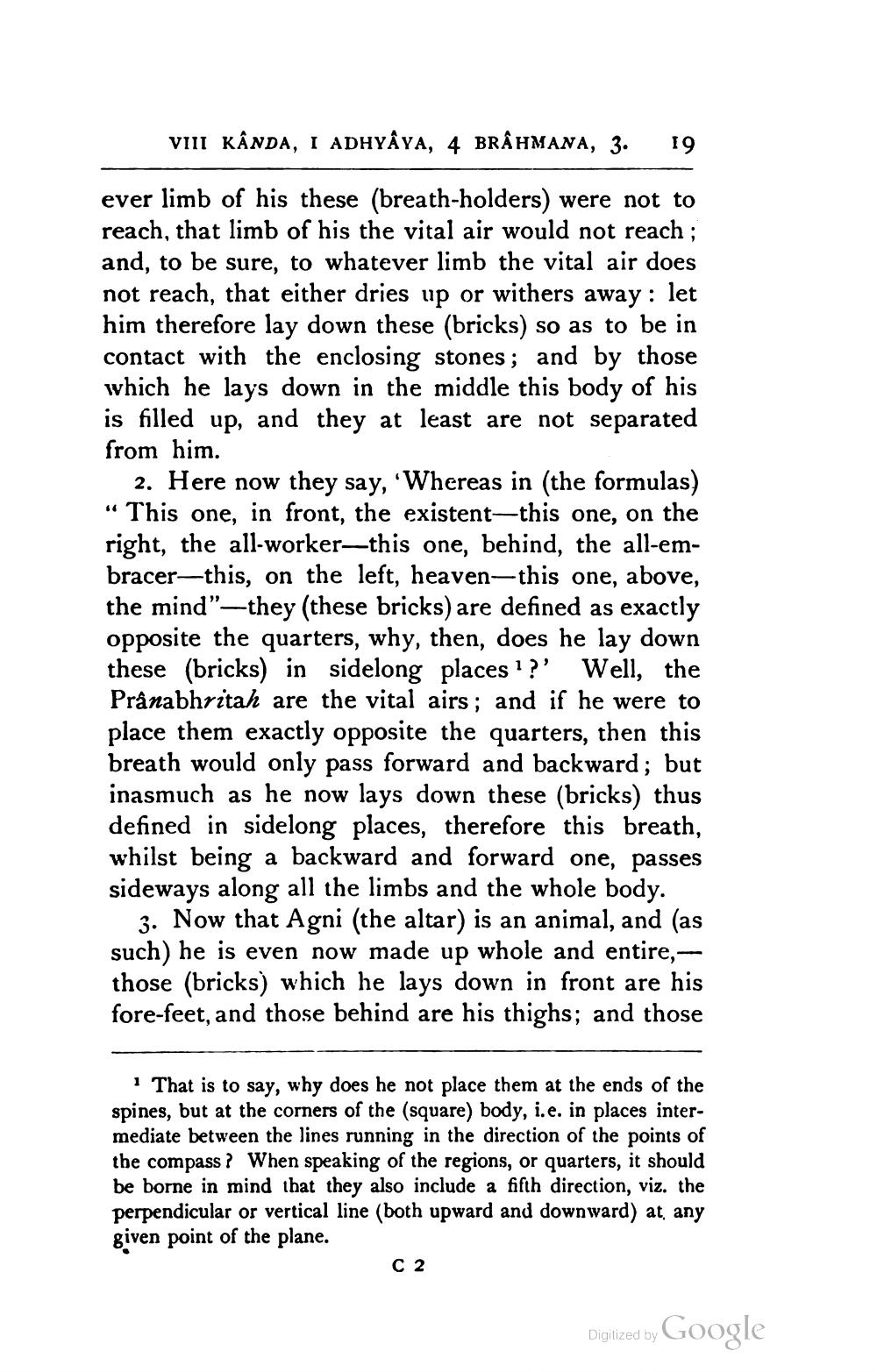________________
VIII KÂNDA, I ADHYAYA, 4 BRAHMANA, 3.
19
ever limb of his these (breath-holders) were not to reach, that limb of his the vital air would not reach ; and, to be sure, to whatever limb the vital air does not reach, that either dries up or withers away: let him therefore lay down these (bricks) so as to be in contact with the enclosing stones; and by those which he lays down in the middle this body of his is filled up, and they at least are not separated from him.
2. Here now they say, 'Whereas in the formulas) “ This one, in front, the existent—this one, on the right, the all-worker—this one, behind, the all-embracer—this, on the left, heaven-this one, above, the mind"—they (these bricks) are defined as exactly opposite the quarters, why, then, does he lay down these (bricks) in sidelong places ? ?' Well, the Pranabhritah are the vital airs; and if he were to place them exactly opposite the quarters, then this breath would only pass forward and backward; but inasmuch as he now lays down these (bricks) thus defined in sidelong places, therefore this breath, whilst being a backward and forward one, passes sideways along all the limbs and the whole body.
3. Now that Agni (the altar) is an animal, and (as such) he is even now made up whole and entire, those (bricks) which he lays down in front are his fore-feet, and those behind are his thighs; and those
1 That is to say, why does he not place them at the ends of the spines, but at the corners of the (square) body, i.e. in places intermediate between the lines running in the direction of the points of the compass? When speaking of the regions, or quarters, it should be borne in mind that they also include a fifth direction, viz. the perpendicular or vertical line (both upward and downward) at any given point of the plane.
C 2
Digitized by Google




